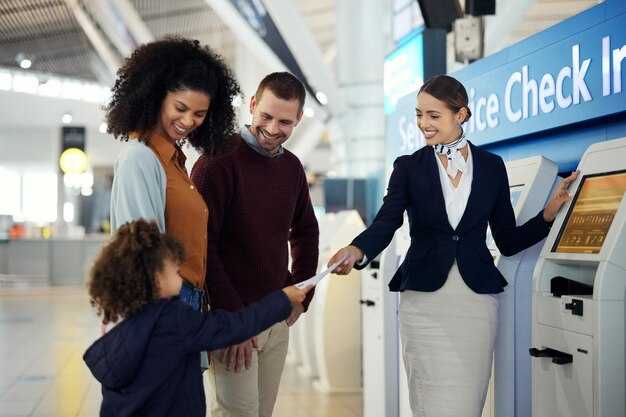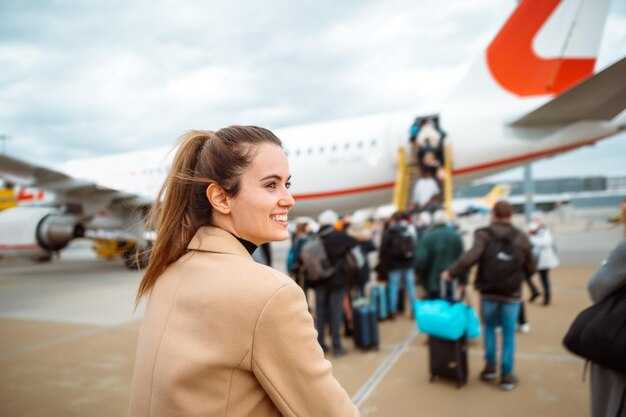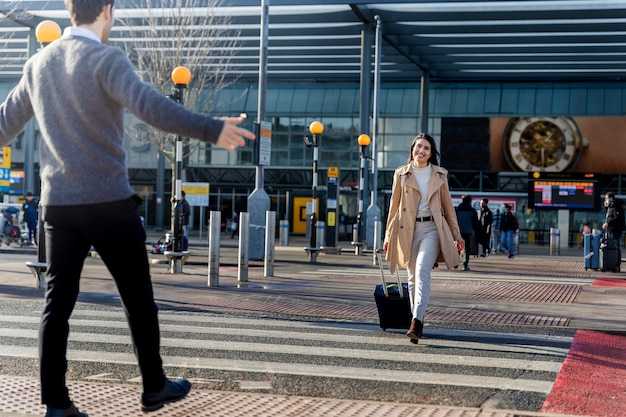Plan to budget at least one hour for immigration and customs on international arrivals, and use automation kiosks when available to speed your entry as a passenger.
From the gate, follow airport signage to Immigration, then baggage claim and Customs. In México, international arrivals at airports like México City and Cancún use dedicated lines; there are documents to prepare; if you travel without checked bags, have your passport, visa (if required), and arrival form ready to speed the process.
Immigration queues at smaller airports run 15–40 minutes; at major hubs they can be 30–60 minutes. Baggage handling adds 15–25 minutes, and Customs screening 5–15 minutes more. If you travel in march or during peak seasons, lines may add 15–30 minutes. Automation kiosks and mobile forms help reduce wait times for many passengers. when possible, use mobile check-in and have documents ready to speed the line.
If you have a transferência to another flight, follow transfer signage, keep your boarding pass handy, and check whether bags are re-checked or sent through to your next destination. In many airports you must clear immigration and customs for the first international leg before proceeding to the transit area, even if you’re staying within the same airline group.
Consult the guide de transportadores e airlines before you travel to know the exact lines, required documents, and average wait times. Airports publish updates every several months; use official sites for the latest information, and download maps for quick transfer paths between terminals.
For routes from cancuns, check if your arrival is routed through a dedicated international desk or a general passport area, which affects the order of baggage pickup and customs inspection.
Always have digital copies of your passport and visa, and ensure you have access to your hotel address and contact info. If you want to minimize delays, every traveler’s plan should include a buffer of hours for unexpected delays; prepare for a smooth start by reviewing the latest airport automation options, even if youre not used to them.
Prepare Your Documents Before Boarding: Visas, Passports, and Arrival Forms
Before you board: documents checklist

Check visa rules for your nationality 72 hours before departure. If you need a visa, apply online or at the local consulate and print the approval or e-visa receipt; carry it with your passport. Ensure your passport is valid for at least six months beyond your planned stay and has two blank pages for stamps. For an isla vacation, confirm island-specific entry steps that may add forms or fees, because some destinations require private checks beyond the main airport signage. If you arrive by ferry, the port may add its own checks beyond the terminal, so plan extra time there.
Prepare two copies of each document: passport data page, visa, and arrival forms. Store copies separately from originals, and keep digital backups in a secure cloud or on your phone. Pack originals in your carry-on for quick access at the check-in counter, and place copies in your luggage pocket or a dedicated travel folder with your suitcases. If you travel with multiple travelers, have all passports and visas organized to avoid delays at the screen.
Prices for visas vary; check the official source or источник for current fees, and note that prices can shift with seasons and processing times. Almost all embassies publish a fee table online, and some destinations show visa costs directly in the airline app or carrier portal. When in doubt, contact the local embassy and compare reviews from fellow travelers to confirm requirements and turnaround times.
At the airport: arrival forms and signage
Many destinations require an online arrival form; complete it before you land and save the QR code for the inspectors. Follow airport signage to immigration desks; have your passport, visa, and any arrival form ready for entry checks. If you fly United or other carriers, check the app for any auto-filled fields and the current price for visa fees so you know what to expect at the desk. At some ports, you enter the migration area directly from the terminal; at others you pass through a separate lane. Where you see a line labeled arrival, move there and present your documents. Upon arrival, collect your suitcases and proceed to exit with your documents ready for review to keep the process smoother.
Navigate the First Moments: Where to Find Arrival, Baggage, and Customs Counters
Go directly to the arrivals hall as you step off the plane. Move toward the large, easy-to-read signs for Arrivals, Baggage, and Customs; typically these counters cluster near a central atrium. Grab a map at the information desk and locate the luggage belts so you can reach them without extra walking. That step sets you up for a smooth start.
Follow the ground-floor layout to baggage claim; you’ll see multiple carousels labeled with belt numbers. If you’re arriving with millions of travelers, you’ll encounter crowds, so keep an eye on your luggage tags and watch for your belt’s screen. When you spot your bag, pull it away quickly to avoid bottlenecks. If you carry extra bags, check the price for additional luggage under the airline policy.
Proceed to the customs area only after you’ve collected your luggage. Present your passport and, if required, your ticket or declaration form. For some trips, the officer will check your arrival purpose and may ask about your stay; most officers aim to move travelers through in a reasonable period. This guide helps every traveler move through smoothly. Some tickets include the code b1-b22 for expedited processing; present it at the appropriate counter.
In latin contexts, signs and agents often speak more than one language. Use the guide boards to locate the correct counters and, if you have a special item, keep its receipt handy. If you arrive from a cruise that includes a ferry transfer, proceed to the ground transport desk for onward connections and a clear path to your next flight or departure.
Best path for a smooth start: arrive, pick up luggage, clear customs, and head to the ground transport area. If you know the known routes, you can skip unnecessary lines and reduce the time you spend after landing; this helps when you’re continuing on a different carrier or making a tight connection. cancún, a common reference point for international arrivals, features dedicated baggage services and bilingual staff.
| Stage | Where to Find | O que fazer |
|---|---|---|
| Chegadas | Main hall signage, information desk | Grab map, locate baggage and customs |
| Baggage Claim | Carousels with belt numbers | Identify luggage, retrieve, tag if needed |
| Customs | Customs counters, dedicated lanes | Present passport, ticket, declarations |
| Transporte Terrestre | Exit doors, transport desk | Choose taxi, ride-share, or shuttle to next step |
Immigration Pro Tips: What Officials Look For and How to Shorten Passport Control Time
Prepare your passport, visa (if required), and arrival form before you reach the counter, and keep them in a neat sleeve to speed the scan. A smooth start reduces wait and sets a confident tone for the border check.
Officials look for a clear travel plan: what you intend to do, how long you will stay, onward travel, and proof of funds. Have hotels and addresses ready, and a return or onward ticket showing the journey; presenting a coherent plan reduces back-and-forth questions. If you are a national, this clarity matters.
To shorten passport control time, use automated gates if your nationality qualifies, present your passport and any visa first, and keep a light, calm demeanor. Answer with concrete facts; avoid long stories that slow the process while you talk.
Arrive at the airport prepared: keep suitcases organized and your documents visible on top so officers can scan them quickly. A polite tone helps; american travellers and latin travellers often experience smoother processing when plans and documents are credible.
Carry hotel confirmations and a return or onward ticket. This improves processing rates at the counter and reduces delays. Have hotels and addresses ready if customs asks for it.
During peak days, queues grow longer; plan for early morning or late-night arrivals. Check airport apps for live wait estimates and head toward the faster lines. If you are arriving from multiple airlines or international connections, keep the shared itinerary handy to explain connections simply.
After passport control, you can relax in cafeterias near arrivals or lounges; grab a light snack and then head to baggage claim and exit. Guides and signs point to departures corridors, baggage carousels, and hotels, making the flow smoother and letting you arrive at your next destination in days rather than hours.
Customs Process Demystified: Declaring Goods, Prohibitions, and What Trips You Up
Always declare anything that could be restricted; if unsure, declare it. This simple rule speeds you through the airport and avoids penalties at customs. The источник of good practice is honesty on the form, not guesswork. For most passengers, a clear declaration covers personal items, gifts, and electronics bought during the trip, especially if you bought items in mexico or méxico. For american travellers transfer through busy hubs, plan extra time at the terminal during departures and boarding. On days when you fly from Cancuns or other stops, keep receipts handy so a quick review by the officer can verify value and keep you beyond the departures gate. That approach feels straightforward, and youll usually avoid back-and-forth between desks even if you have business gear or a handful of souvenirs.
What to declare and how to classify
- Declare all goods you purchased abroad, including electronics, clothing, and gifts. If you bought items in mexico or méxico, include receipts; if you bought in cancuns, declare the value and country of purchase. Those receipts help with quick migration and a smooth exit from the terminal.
- Keep receipts for the last 30 days; most items are taxed differently, and a clear record helps avoid delays at the counter. If you bought something that feels like a personal memento but exceeds the allowance, declare it anyway.
- Know your personal exemptions and how duties are assessed; for business purchases or “that thing” you plan to resell, you must declare it to avoid fines. Most agencies use a simple threshold; you must declare anything above it.
- When you travel with a transfer, there may be a second line after the flight; declare before you reach the first officer to prevent backtracking.
- For gear related to work or hobbies, distinguish personal use from inventory; this prevents misclassification that trips you up later.
Prohibitions, risks, and how to avoid trips you up
- Prohibited items include certain foods, plants, seeds, meat, dairy, and animal products; check the official source (источник) before packing, especially if you visited climates where fresh produce is common, or if you’re returning from mexico-mexicana trips.
- So-called restricted items, like large amounts of cash or certain medicines, require declaration; travellers must disclose these to avoid penalties. You should know that you must declare currency above thresholds.
- Common missteps: assuming small-value items are exempt; most travellers should declare if any item could breach limits or if receipts show a higher price than expected.
- Departures and migration moments in the airport can feel hectic; despite the busyness, plan ahead, bring all receipts, and use the lounge after clearance. Youll save time by staying organized through every phase: enter, migration, terminal, boarding, and beyond.
- As avaliações de viajantes frequentes mostram que embalar leve, permanecer honesto e conhecer as regras de destino sobre o que você pode trazer do México ou de outros lugares reduz o risco. O clima do aeroporto pode ser agitado, mas a preparação mantém você no controle.
Por que o Aeroporto de Cancún Parece Mais Calmo: Design, Pessoal e Fluxo de Passageiros Que Facilitam as Filas

Se você deseja uma entrada mais tranquila, siga primeiro o fluxo do lado das partidas, depois a segurança e, por fim, os portões. Esta sequência minimiza o retrocesso e espalha as multidões por vários pontos de verificação, reduzindo os tempos de espera durante os horários de pico. Para Cancún, a maioria dos dias movimentados ainda parece mais calma porque o andar é projetado para guiar os passageiros ao longo de caminhos específicos.
Três faixas paralelas correm no andar principal, com zonas codificadas por cores e placas claramente marcadas para facilitar o fluxo. A equipe no local orienta os passageiros para as faixas corretas, enquanto bancos e espaçamento bem planejado evitam aglomerações em gargalos. Quiosques de autoatendimento agilizam o processamento de bilhetes para quem tem passes de embarque digitais, e o ambiente geral parece menos tenso à medida que as filas se movem de forma mais previsível. Este layout faz com que os corredores laterais funcionem de forma eficiente durante os períodos de pico.
A maioria das melhorias resulta de reforços de pessoal durante os horários de pico; os funcionários são treinados para ajudar os viajantes da American e da United em vários idiomas. As avaliações dos passageiros mostram esperas de segurança mais curtas, corredores mais calmos e travessias mais suaves entre os terminais. A abordagem unificada em todos os locais ajuda os funcionários a operar de forma consistente durante as partidas e a alfândega.
Para maximizar o conforto, use bilhetes online e quiosques de autoatendimento e, em seguida, deixe as malas na área designada. Se você quiser menos estresse, escolha as filas de segurança centrais durante o tráfego do meio-dia e siga as placas para o andar principal em direção ao seu portão. Seguir um caminho claro passo a passo mantém você navegando com o fluxo e longe das multidões.

 Chegadas Internacionais – O Que Esperar no Aeroporto, Imigração e Alfândega">
Chegadas Internacionais – O Que Esperar no Aeroporto, Imigração e Alfândega">

Comentários